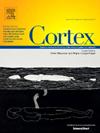海马总体积和海马亚区体积与导航能力有关吗?实现方法一致性的呼声
IF 3.2
2区 心理学
Q1 BEHAVIORAL SCIENCES
引用次数: 0
摘要
尽管人类需要成功导航,但他们的导航能力却千差万别,这些个体差异可能与大脑结构的变化有关。先前的研究支持导航专家和老年人的海马体积与导航能力之间存在相关性,但这种关系在健康的年轻人身上却受到了关注。我们评估了 99 名健康年轻人在虚拟桌面迷宫中的导航能力,并将他们的表现与海马灰质总体积相关联。对于这些人中的一部分,我们进一步将内侧颞叶(包括海马区)分割成解剖学上不同的亚区,以独特地研究海马亚区体积与导航之间的关联。由于需要区分外观相似的迷宫走廊和部分重叠的路线,因此具有较强模式分离能力的青壮年可能在这项任务中表现得更好。因此,我们推测成功的导航与海马 CA3 和齿状回(DG)亚场的体积呈正相关,因为这些区域在模式分离中起着重要作用。CA1和内侧皮层(ERC)也与啮齿动物的空间记忆有关,这表明它们的体积与导航能力之间可能存在关系。与我们的假设一致,我们观察到海马亚区的体积与寻路准确性之间存在正相关关系,而ERC和海马旁皮层的体积则与导航效率相关。然而,在分析海马总体积时,需要进行细致的解释。我们发现了 "辛普森悖论 "的证据,即男性的海马体总体积与导航准确性没有相关性,女性的海马体总体积与导航准确性呈负相关,但如果将所有男性和女性样本加在一起,则两者呈正相关。此外,在海马体总体积和路径效率之间也没有观察到明显的关系。鉴于这些发现,我们敦促在解释结果时要谨慎,因为这些关联因分析技术(包括基于体素的形态测量)、性别分层以及海马前部和后部分支的不同而不同。总之,这项研究加深了我们对青壮年脑容量与导航能力之间关系的理解,但同时也强调了不同研究在边界定义、神经成像技术、统计方法以及导致个体差异的因素等方面需要保持方法上的一致性。本文章由计算机程序翻译,如有差异,请以英文原文为准。
Do total hippocampus and hippocampal subfield volumes relate to navigation ability? A call towards methodological consistency
Despite the need for successful navigation, humans vary greatly in their ability to navigate, and these individual differences may relate to variation in brain structure. While prior research provides support for a correlation between hippocampal volume and navigation ability in both navigation experts and in older individuals, this relationship is under scrutiny for healthy, young adults. We assessed 99 healthy young adults' ability to navigate in a virtual, desktop maze and correlated their performance with total hippocampal gray matter volume. For a subset of these individuals, we further segmented the medial temporal lobe—including regions of the hippocampus—into anatomically-distinct subregions to uniquely examine the association between volumes of hippocampal subfields and navigation. Given the need to distinguish between similar-looking maze hallways and partially overlapping routes, young adults with stronger pattern separation ability may perform better in this task. Thus, we theorized that successful navigation would positively correlate with hippocampal CA3 and dentate gyrus (DG) subfield volumes due to these regions' role in pattern separation. CA1 and entorhinal cortex (ERC) are both associated with rodent spatial memory, too, suggesting a possible relationship between their volumes and navigation performance. Consistent with our hypotheses, we observed a positive relationship between volumes of hippocampal subfields and wayfinding accuracy, while ERC and parahippocampal cortex volumes correlated with navigation efficiency. However, when analyzing total hippocampal volume, a nuanced interpretation is warranted. We found evidence of Simpson's Paradox, where total hippocampal volume and navigation accuracy displayed no correlation in males, a negative correlation in females, yet a positive correlation when considering the full sample of males and females combined. Furthermore, no significant relationship was observed between total hippocampal volume and path efficiency. Given these findings, we urge caution in interpreting the results because these associations differ by analysis techniques (including voxel-based morphometry), after sex stratification, and with anterior and posterior hippocampal subdivisions. Overall, this study enhances our understanding of the relationship between brain volume and navigation ability for young adults but also emphasizes the need for methodological consistency across studies with respect to boundary definitions, neuroimaging techniques, statistical methods, and factors that give rise to individual differences.
求助全文
通过发布文献求助,成功后即可免费获取论文全文。
去求助
来源期刊

Cortex
医学-行为科学
CiteScore
7.00
自引率
5.60%
发文量
250
审稿时长
74 days
期刊介绍:
CORTEX is an international journal devoted to the study of cognition and of the relationship between the nervous system and mental processes, particularly as these are reflected in the behaviour of patients with acquired brain lesions, normal volunteers, children with typical and atypical development, and in the activation of brain regions and systems as recorded by functional neuroimaging techniques. It was founded in 1964 by Ennio De Renzi.
 求助内容:
求助内容: 应助结果提醒方式:
应助结果提醒方式:


